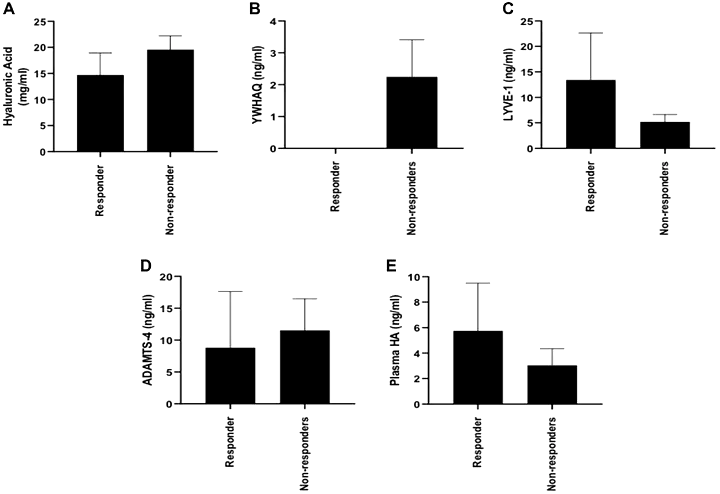Identification of Candidate Synovial Fluid Biomarkers for the Prediction of Patient Outcome After Microfracture or Osteotomy

Abstract
Background: Biomarkers are needed to predict clinical outcomes for microfracture and osteotomy surgeries to ensure patients can be better stratified to receive the most appropriate treatment.
Purpose: To identify novel biomarker candidates and to investigate the potential of a panel of protein biomarkers for the prediction of clinical outcome after treatment with microfracture or osteotomy.
Study Design: Descriptive laboratory study.
Methods: To identify novel candidate biomarker proteins, we used label-free quantitation after liquid chromatography–tandem mass spectrometry of dynamic range-compressed synovial fluids (SFs) from individuals who responded excellently or poorly (based on change in Lysholm score) to microfracture (n = 6) or osteotomy (n = 7). Biomarkers that were identified in this proteomic analysis or that relate to osteoarthritis (OA) severity or have predictive value in another early OA therapy (autologous cell implantation) were measured in the SF of 19 and 13 patients before microfracture or osteotomy, respectively, using commercial immunoassays, and were normalized to urea. These were aggrecanase-1 (ADAMTS-4), cartilage oligomeric matrix protein (COMP), hyaluronan (HA), lymphatic vessel endothelial hyaluronan receptor 1 (LYVE-1), matrix metalloproteinase 1 and 3, soluble CD14, S100 calcium binding protein A13, and 14-3-3 protein theta (YWHAQ). Levels of COMP and HA were also measured in the plasma of these patients. To find predictors of postoperative function, multivariable regression analyses were performed.
Results: Proteomic analyses highlighted YWHAQ and LYVE-1 as being differentially abundant between the clinical responders/improvers and nonresponders after microfracture. A linear regression model after backward variable selection could relate preoperative concentrations of SF proteins (HA, YWHAQ, LYVE-1), activity of ADAMTS-4, and patient demographic characteristics (smoker status and sex) with Lysholm score 12 months after microfracture. Further, a generalized linear model with elastic net penalization indicated that lower preoperative activity of ADAMTS-4 in SF, being a nonsmoker, and being younger at the time of operation were indicative of a higher postoperative Lysholm score (improved joint function) after osteotomy surgery.
Conclusion: We have identified biomarkers and generated regression models with the potential to predict clinical outcome in patients treated with microfracture or osteotomy of the knee.
Clinical Relevance: Candidate protein biomarkers identified in this study have the potential to help determine which patients will be best suited to treatment with microfracture or osteotomy.